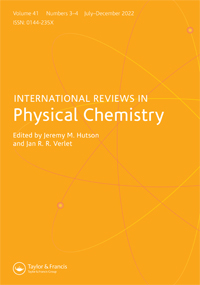环聚合物瞬子理论
IF 2.5
2区 化学
Q3 CHEMISTRY, PHYSICAL
引用次数: 51
摘要
摘要:瞬子理论从最优隧穿路径的角度对量子隧穿过程进行了简单的描述。该理论严格地建立在量子力学原理的基础上,并从路径积分公式的半经典近似中推导出来。在多维系统中,最优隧穿路径通常不同于最小能量路径,并且被视为在过渡状态周围“抄近路”。瞬子理论的环状聚合物公式为应用该理论描述、模拟和预测复杂分子体系中的量子隧穿效应提供了一种实用的计算方法。它既可以用来计算导致化学反应的隧穿过程的速率,也可以用来计算分子簇的隧穿分裂模式。在这篇综述中,我们介绍了理论推导的统一,并讨论了最近对数值实现的改进。本文章由计算机程序翻译,如有差异,请以英文原文为准。
Ring-polymer instanton theory
Abstract Instanton theory provides a simple description of a quantum tunnelling process in terms of an optimal tunnelling pathway. The theory is rigorously based on quantum mechanics principles and is derived from a semiclassical approximation to the path-integral formulation. In multidimensional systems, the optimal tunnelling pathway is generally different from the minimum-energy pathway and is seen to ‘cut the corner’ around the transition state. A ring-polymer formulation of instanton theory leads to a practical computational method for applying the theory to describe, simulate and predict quantum tunnelling effects in complex molecular systems. It can be used to compute either the rate of a tunnelling process leading to a chemical reaction or the tunnelling splitting pattern of a molecular cluster. In this review, we introduce a unification of the theory’s derivation and discuss recent improvements to the numerical implementation.
求助全文
通过发布文献求助,成功后即可免费获取论文全文。
去求助
来源期刊
CiteScore
14.20
自引率
1.60%
发文量
5
审稿时长
1 months
期刊介绍:
International Reviews in Physical Chemistry publishes review articles describing frontier research areas in physical chemistry. Internationally renowned scientists describe their own research in the wider context of the field. The articles are of interest not only to specialists but also to those wishing to read general and authoritative accounts of recent developments in physical chemistry, chemical physics and theoretical chemistry. The journal appeals to research workers, lecturers and research students alike.

 求助内容:
求助内容: 应助结果提醒方式:
应助结果提醒方式:


